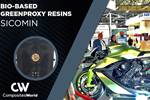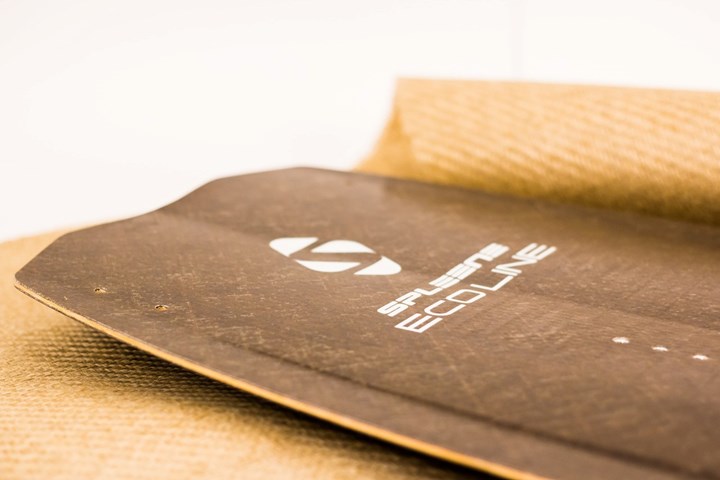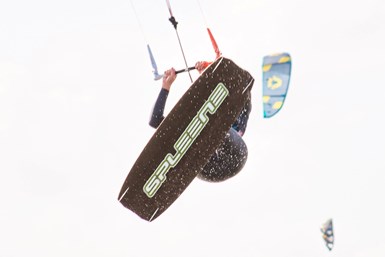Sicomin GreenPoxy 33 chosen for Spleene kiteboard range
Flax fiber multiaxial reinforcement plies, a CNC milled wood core and bamboo rail sections are press molded together using Sicomin’s bio-epoxy resin system for an eco-friendly twintip kiteboard production.
Sicomin (Châteauneuf les Martigues, France), a formulator of high-performance epoxy resin systems, has confirmed its GreenPoxy 33 bio-resin range will be used by Spleene Kiteboarding (Baden-Württemberg, Germany) in its new Eco Line RIP 39 boards.
Designed and developed with a commitment to genuine sustainability during a 2-year collaboration with the Technical University of Applied Sciences Augsburg (Germany) and the German Federal Ministry for Economic Affairs and Climate Action, all aspects of the Eco Line RIP 39 twintip kiteboard’s construction were reviewed. Flax fiber multiaxial reinforcement plies, a CNC milled wood core and bamboo rail sections are press molded together using Sicomin’s bio-epoxy resin system.
GreenPoxy 33 is an entirely carcinogenic, mutagenic and reprotoxic (CMR)- free resin system that has been optimized for a wide range of production processes including hot press production used by Spleene for the new boards. Substituting traditional resins, Sicomin says GreenPoxy 33 enables manufacturers to quickly adopt greener processes, enabling eco-friendly performance with no compromise on ride quality, durability or performance.
In addition to redefining the environmental expectations for a kitesurfing board, the Eco Line RIP 39 also delivers on the water. Spleene’s Kiteboarding’s distinctive deck, core and base design details coupled with the added vibration damping of the natural flax and GreenPoxy laminates, mean the boards balance explosive pop for tricks and jumps with long-term comfort that keeps riders out on the water.
“We chose Sicomin’s GreenPoxy 33 primarily for its compatibility with our hot press molding process. Of course, we wanted a great bio-resin, but it also had to be both production-ready and backed up by an exceptional track record. There is no gain if bio-alternatives lead to delamination or increased fragility in the part,” Sebastian Fitz, operations director at Spleene, says. “Our collaboration with Sicomin allowed us to achieve on-the-water performance without compromising our commitment to sustainability.”
The Eco Line RIP 39 represents just the beginning of Spleene’s eco-initiative. The company plans to expand the usage of GreenPoxy resins across its other twintip board lines, aiming for an entirely eco-friendly production across its range during 2024.
For related content, read “ATL Composites collaboration advances kite-foil board production for Paris Olympics.”
Related Content
-
Combining multifunctional thermoplastic composites, additive manufacturing for next-gen airframe structures
The DOMMINIO project combines AFP with 3D printed gyroid cores, embedded SHM sensors and smart materials for induction-driven disassembly of parts at end of life.
-
MFFD thermoplastic floor beams — OOA consolidation for next-gen TPC aerostructures
GKN Fokker and Mikrosam develop AFP for the Multifunctional Fuselage Demonstrator’s floor beams and OOA consolidation of 6-meter spars for TPC rudders, elevators and tails.
-
TU Munich develops cuboidal conformable tanks using carbon fiber composites for increased hydrogen storage
Flat tank enabling standard platform for BEV and FCEV uses thermoplastic and thermoset composites, overwrapped skeleton design in pursuit of 25% more H2 storage.


















